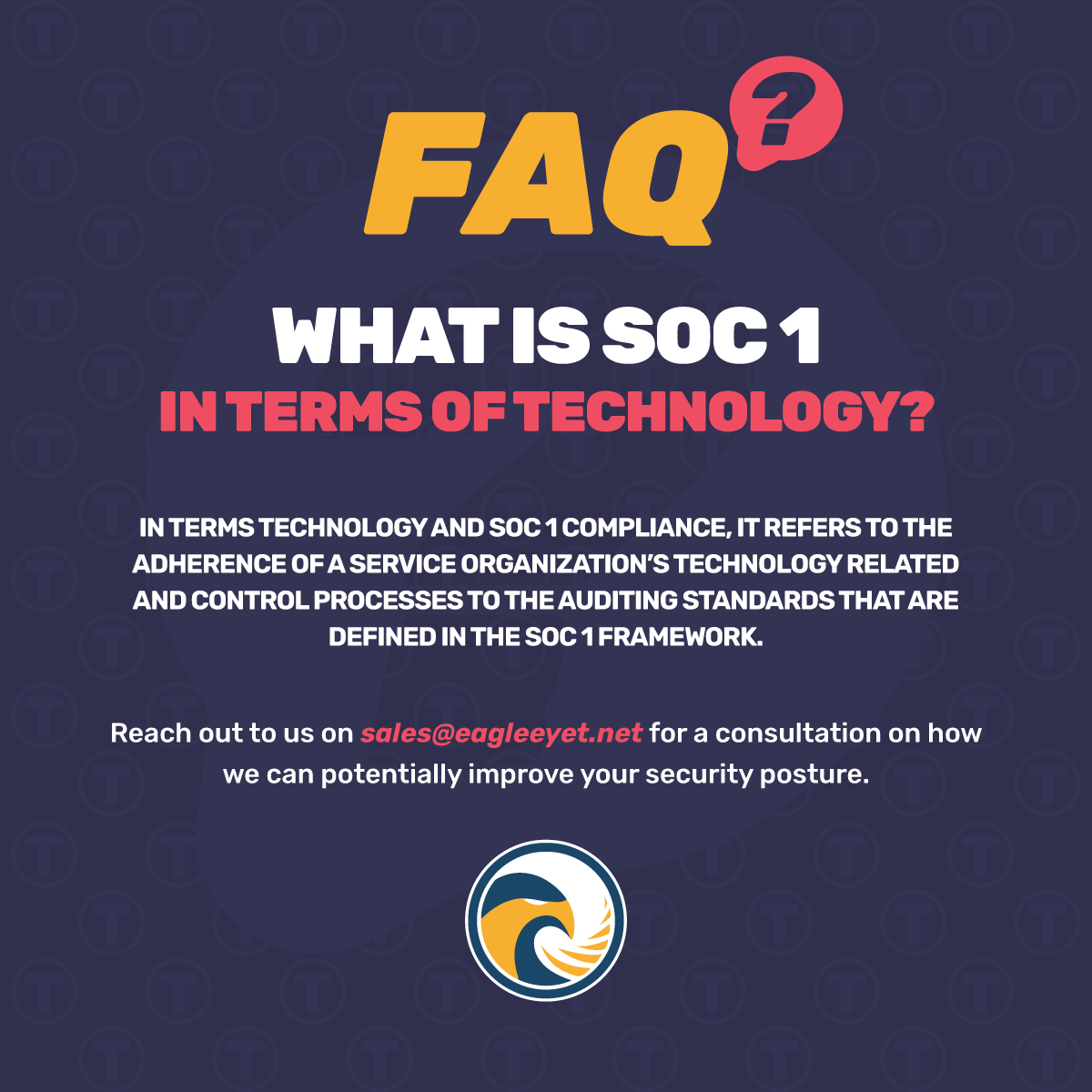
In terms technology and SOC 1 compliance, it refers to the adherence of a service organization’s technology related and control processes to the auditing standards that are defined in the SOC 1 framework.
The service organization is assessed on how well a service organization’s technology and IT systems support and safeguard financial reporting processes of their clients (user entities).
Here is a breakdown of how SOC 1 compliance relates to technology

Control Objectives
In SOC 1 compliance this involves defining control objectives in relation to financial reporting.
In the context of technology, the control objectives often pertain to IT systems, infrastructure and processes which will have an impact on financial reporting accuracy & integrity.
IT Controls
It is important for service organizations to establish and document specific IT Controls. These controls need to support the achievement of control objectives.
These IT controls can cover a wide range of areas which include the following:
- Access Controls - These ensure that only authorized personnel have access to financial systems & Data.
- Change Management - Is the implementation of processes to track, review, and approve changes to IT systems & applications.
- Data Integrity - Is the protecting the accuracy & completeness of financial data through data validation & verification.
- Backup & Recovery - It is important to implement robust data backup & recovery procedures to prevent data loss that could impact financial reporting.
- Security Measures - It is important to implement security controls to protect financial systems from unauthorized access, data breaches and other security threaths.
Risk Assessment
The use of technology plays a critical role in identifying and assessing risks that might impact financial reporting.
This includes evaluating risks related to system vulnerabilities, data accuracy, and the potential for fraud or errors in financial systems.
Monitoring & Testing
It is important for service organizations to regularly monitor & test their IT controls to ensure they are functioning as designed.
This includes ongoing monitoring of access logs, security incidents, and the performance of the financial systems.
Information & Communication
Effective communication of information related to technology controls is a must.
This includes informing stakeholders (both internal & External) about design and operating effectiveness of IT controls.
Audit & Reporting
It is important for independent auditors to assess the technology related controls and processes as part of the SOC 1 audit.
The audit examines the design & effectiveness of IT controls, review documentation & perform, and test to verify compliance.
The audit results are usually documented in the SOC 1 report.
Type I vs Type II
SOC 1 compliance either invoices a type 1 or type 2 report.
Type 1 assess the design of the controls in any specific point in time.
On the other hand type 2 assess both the design and operational effectiveness of the controls over a specific period, usually 6 months or more.
The Type 2 report provides a more comprehensive view of technology controls in action.
Summary
The focus of SOC 1 compliance is the focuses on ensuring that a service organizations IT systems and controls are designed and operated to support the accuracy & integrity of financial reporting for their clients
Technology plays an important role in achieving these objectives & is a key component of the overall SOC 1 compliance process.
Leave a Reply